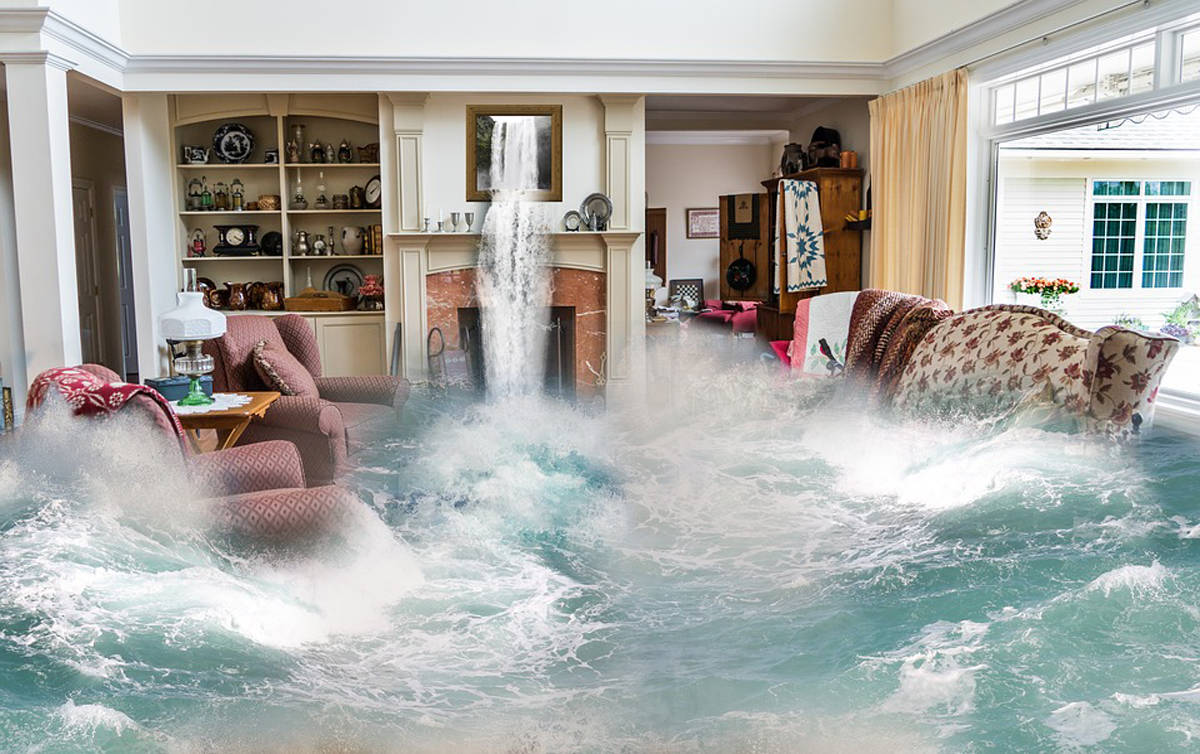 By Kathleen Riggs
By Kathleen Riggs
With heavy snowfall and recent warm temperatures, many Utahns have experienced flooding in their homes. Flood or drain backup water may contain sewage and unknown chemicals that can contaminate carpet and present a health hazard. Water from irrigation leakage or sump pump failure may be less risky but equally damaging. In addition to carpet damage is clothing and fabric damage and the race against mildew. Consider these tips for cleaning up after a flood.
For carpet, the first step is to immediately get it off the floor to start drying it and to preserve the wood under the carpet. You may also have to remove the foam carpet padding. If possible, take it out to a driveway or patio to dry. If the carpet is too heavy to move, lift it off the floor and prop it up to allow air to circulate around it. If possible, don’t let the carpet completely dry this way if you want to save it, as it will likely be stretched out of shape when it dries. If you are working with contaminated water damage, be sure to wear rubber gloves before handling the carpet.
Next, clean the floor to minimize odor and mildew. Scrub the floors with hot water and detergent, then rinse them with a bleach solution of one-half cup of bleach per gallon of water.
Determine if the carpet can be saved. You may need to consult professional carpet cleaners to decide if it is worth saving. Your decision will depend on the source of the water damage. If it is flood water or a sewer backup, your main concern will be sanitation. If the damage is from rain or culinary water, your main concern is preventing mildew. In this case, most rented carpet cleaners should do an adequate job cleaning it.
Recovering flood-damaged clothing is a time-sensitive battle in preventing mildew. Most of the dirt can be washed out, but mildew can permanently damage clothes quickly. Be sure to wear rubber gloves when handling wet clothing and fabric.
Since you likely have more clothes than you can clean all at once or want to have dry cleaned, let everything air dry as quickly as possible. Don’t leave clothes in a heap, as this promotes mildew growth. Once dry, shake them out or brush off loose dirt and dried mud. Next, separate clothes the way you would for normal washing. Store dry, separated clothes in plastic bags if it is going to take a long period of time to get everything washed.
Pre-soak clothes in cold water or use the pre-rinse cycle on your washer to remove any additional dirt. Use hot water and detergent to kill germs, and remember to load the washer more loosely than usual since the clothes are extra dirty.
Wool and delicate items may not tolerate hot water. If you don’t want to pay to have them dry cleaned, hand wash them in a basin of warm water using 1–2 tablespoons of heavy duty liquid detergent. Allow them to soak for at least 3 minutes, and rinse thoroughly.
Most blankets, throw rugs, bedspreads, quilts, and down-filled items can receive the same treatment as clothing. Just be sure to carefully support them when they are wet to avoid ripping from the weight of the water.
Cleaning water-damaged areas is often difficult and discouraging work. However, with time and patience, most clothing items with light-to-medium water damage can be salvaged. There’s also a good chance that carpet with minimal damage can be saved. For large jobs or major sewer backups, it may be best to contact a disaster cleanup company.
Kathleen Riggs is a Utah State University Extension professor.
Articles related to “Tips for salvaging carpets and clothes after a flood”




It helped when you mentioned how you should scrub your floors with detergent to avoid mold after a flood. I can see that doing some research can help you find the best way to get your house back after a flood. Personally, I would also want to find a reputable and trusted water damage restoration company in my area to help me with this.
I’m glad you spoke about scrubbing the floors to prevent mold from growing. My co-worker had a pipeline that broke and flooded his basement. I will pass him the article so he can get his place dried out and also call a water restoration company.
Senary is very Clothes